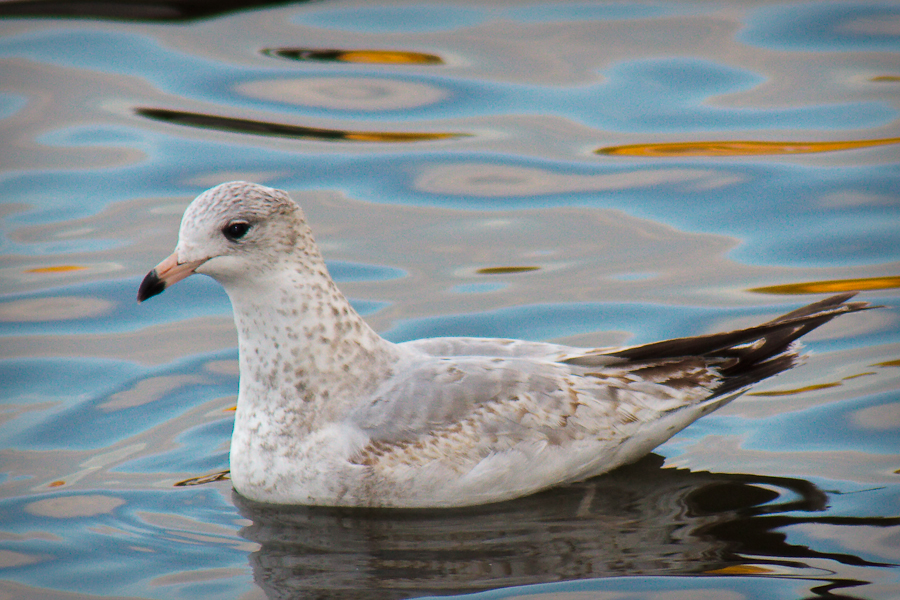Prospect Park November 1
I spent a few hours in the park today, mostly just to experiment with the camera, but I still managed to tally 26 species including my first Buffleheads of the year:
- Mute Swan
- American Black Duck
- American Black Duck x Mallard (hybrid)
- Mallard
- Northern Shoveler
- Bufflehead
- Ruddy Duck
- Great Blue Heron
- Black-crowned Night-Heron
- American Coot
- Ring-billed Gull
- Herring Gull
- Rock Pigeon
- Belted Kingfisher
- Red-bellied Woodpecker
- Downy Woodpecker
- Eastern Phoebe
- American Crow
- Tufted Titmouse
- White-breasted Nuthatch
- Ruby-crowned Kinglet
- Hermit Thrush
- American Robin
- European Starling
- Chipping Sparrow
- Song Sparrow
- White-throated Sparrow
- Northern Cardinal

Ring-billed Gull, 1st Winter Plumage
Prospect Park, 2009-11-01
Camera-wise my best results so far seem to come from the Tamron 28-300mm DI VC lens fully extended at 300mm, about f/8, with the 580 EX II flash. I also discovered today that the camera’s AV mode is a little conservative with shutter speed. In manual mode I can definitely set it faster than the camera thinks wise. Grain’s noticeable at ISO 800, though I can clean that up a little in Lightroom.
It also occurred to me to compare the binoculars to the zoom. Turns out a 200mm lens (on a APS-C sensor) is roughly equivalent to a 10x pair of binoculars: i.e. the field of view is roughly the same. A 300mm lens should be equivalent of about 15x. I’m not sure why the binoculars are so much brighter and clearer than the equivalent pictures. Best guess is that we haven’t yet developed CCDs that are equivalent to the human retina. There are 120 million or so rods in each eye (and another 6 or 7 million) cones, which is still close to an order of magnitude larger than the number of pixels in most cameras. Plus I suspect the eye is more responsive than the CCD.
